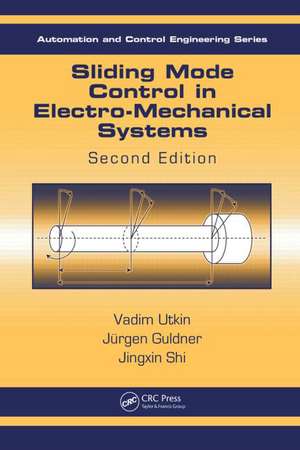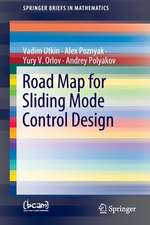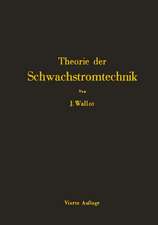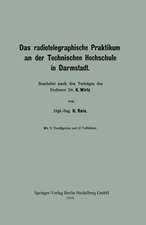Sliding Mode Control in Electro-Mechanical Systems: Automation and Control Engineering
Autor Vadim Utkin, Juergen Guldner, Jingxin Shien Limba Engleză Hardback – mai 2009
Interest in SMC has grown rapidly since the first edition of this book was published. This second edition includes new results that have been achieved in SMC throughout the past decade relating to both control design methodology and applications.
In that time, Sliding Mode Control (SMC) has continued to gain increasing importance as a universal design tool for the robust control of linear and nonlinear electro-mechanical systems. Its strengths result from its simple, flexible, and highly cost-effective approach to design and implementation. Most importantly, SMC promotes inherent order reduction and allows for the direct incorporation of robustness against system uncertainties and disturbances. These qualities lead to dramatic improvements in stability and help enable the design of high-performance control systems at low cost.
Written by three of the most respected experts in the field, including one of its originators, this updated edition of Sliding Mode Control in Electro-Mechanical Systems reflects developments in the field over the past decade. It builds on the solid fundamentals presented in the first edition to promote a deeper understanding of the conventional SMC methodology, and it examines new design principles in order to broaden the application potential of SMC.
SMC is particularly useful for the design of electromechanical systems because of its discontinuous structure. In fact, where the hardware of many electromechanical systems (such as electric motors) prescribes discontinuous inputs, SMC becomes the natural choice for direct implementation. This book provides a unique combination of theory, implementation issues, and examples of real-life applications reflective of the authors’ own industry-leading work in the development of robotics, automobiles, and other technological breakthroughs.
Din seria Automation and Control Engineering
-
 Preț: 386.01 lei
Preț: 386.01 lei - 20%
 Preț: 719.06 lei
Preț: 719.06 lei -
 Preț: 317.46 lei
Preț: 317.46 lei - 31%
 Preț: 433.47 lei
Preț: 433.47 lei - 18%
 Preț: 1330.48 lei
Preț: 1330.48 lei - 18%
 Preț: 1144.56 lei
Preț: 1144.56 lei - 15%
 Preț: 542.20 lei
Preț: 542.20 lei -
 Preț: 422.59 lei
Preț: 422.59 lei - 26%
 Preț: 1577.16 lei
Preț: 1577.16 lei - 15%
 Preț: 489.26 lei
Preț: 489.26 lei - 20%
 Preț: 618.36 lei
Preț: 618.36 lei - 8%
 Preț: 460.07 lei
Preț: 460.07 lei - 26%
 Preț: 874.36 lei
Preț: 874.36 lei - 18%
 Preț: 1325.92 lei
Preț: 1325.92 lei - 26%
 Preț: 428.70 lei
Preț: 428.70 lei - 18%
 Preț: 1108.37 lei
Preț: 1108.37 lei - 15%
 Preț: 461.03 lei
Preț: 461.03 lei - 18%
 Preț: 1054.58 lei
Preț: 1054.58 lei - 25%
 Preț: 767.07 lei
Preț: 767.07 lei - 38%
 Preț: 331.87 lei
Preț: 331.87 lei - 38%
 Preț: 331.87 lei
Preț: 331.87 lei - 35%
 Preț: 408.36 lei
Preț: 408.36 lei - 18%
 Preț: 1229.15 lei
Preț: 1229.15 lei - 18%
 Preț: 1125.42 lei
Preț: 1125.42 lei - 26%
 Preț: 456.63 lei
Preț: 456.63 lei - 53%
 Preț: 207.71 lei
Preț: 207.71 lei - 30%
 Preț: 931.61 lei
Preț: 931.61 lei - 18%
 Preț: 1668.41 lei
Preț: 1668.41 lei - 29%
 Preț: 1194.39 lei
Preț: 1194.39 lei - 22%
 Preț: 429.38 lei
Preț: 429.38 lei - 29%
 Preț: 1190.72 lei
Preț: 1190.72 lei - 9%
 Preț: 620.15 lei
Preț: 620.15 lei - 26%
 Preț: 1101.06 lei
Preț: 1101.06 lei - 18%
 Preț: 1344.22 lei
Preț: 1344.22 lei - 15%
 Preț: 456.50 lei
Preț: 456.50 lei - 18%
 Preț: 784.81 lei
Preț: 784.81 lei - 18%
 Preț: 1305.87 lei
Preț: 1305.87 lei - 18%
 Preț: 1223.61 lei
Preț: 1223.61 lei - 35%
 Preț: 408.36 lei
Preț: 408.36 lei
Preț: 1339.62 lei
Preț vechi: 1633.68 lei
-18% Nou
Puncte Express: 2009
Preț estimativ în valută:
256.32€ • 269.07$ • 212.76£
256.32€ • 269.07$ • 212.76£
Carte tipărită la comandă
Livrare economică 10-24 aprilie
Preluare comenzi: 021 569.72.76
Specificații
ISBN-13: 9781420065602
ISBN-10: 1420065602
Pagini: 502
Ilustrații: 800; 18 Tables, black and white; 237 Illustrations, black and white
Dimensiuni: 156 x 234 x 30 mm
Greutate: 0.82 kg
Ediția:Nouă
Editura: CRC Press
Colecția CRC Press
Seria Automation and Control Engineering
ISBN-10: 1420065602
Pagini: 502
Ilustrații: 800; 18 Tables, black and white; 237 Illustrations, black and white
Dimensiuni: 156 x 234 x 30 mm
Greutate: 0.82 kg
Ediția:Nouă
Editura: CRC Press
Colecția CRC Press
Seria Automation and Control Engineering
Public țintă
ProfessionalCuprins
Introduction. Mathematical Background. Design Concepts. Sliding Mode Control of Pendulum Systems. Control of Linear Systems. Sliding Mode Observers. Integral Sliding Mode. The Chattering Problem. Discrete-Time and Delay Systems. Electric Drives. Power Converters. Advanced Robotics. Automotive Applications.
Notă biografică
Vadim Utkin is one of the originators of the concepts of Variable Structure Systems and Sliding Mode Control. Author of five books and more than 300 technical papers, he was awarded the Lenin Prize (the highest scientific award in the former Soviet Union) and was Ford Chair of Electromechanical Systems from 1994 to 2002 at the Ohio State University.
Jüergen Guldner received a Master of Science in Electrical Engineering from Clemson University, South Carolina and a Ph.D. in Controls and Robotics from the Technical University of Munich, Germany, in collaboration with the German Aerospace Center (DLR). He is currently with BMW Manufacturing Co. in Greenville-Spartanburg, SC, preparing the production launch of BMW’s first Active Hybrid Vehicle.
Jingxin Shi graduated from Beijing University of Aeronautics and Astronautics and has worked as visiting scholar and research engineer (permanent employee) for the German Aerospace Centre (DLR), Institute for Robotics and System Dynamics. He was one of the key engineers of German-D2 space robotic program ROTEX (Robot Technology Experiment) which flew aboard U.S. space shuttle Columbia in 1993.
Jüergen Guldner received a Master of Science in Electrical Engineering from Clemson University, South Carolina and a Ph.D. in Controls and Robotics from the Technical University of Munich, Germany, in collaboration with the German Aerospace Center (DLR). He is currently with BMW Manufacturing Co. in Greenville-Spartanburg, SC, preparing the production launch of BMW’s first Active Hybrid Vehicle.
Jingxin Shi graduated from Beijing University of Aeronautics and Astronautics and has worked as visiting scholar and research engineer (permanent employee) for the German Aerospace Centre (DLR), Institute for Robotics and System Dynamics. He was one of the key engineers of German-D2 space robotic program ROTEX (Robot Technology Experiment) which flew aboard U.S. space shuttle Columbia in 1993.
Descriere
Sliding Mode Control (SMC) is gaining importance as a universal design tool for the robust control of linear and nonlinear systems. Consequently, SMC has seen many developments and improvements in recent years as well as a great increase in applications. This second edition promotes a deeper understanding of the conventional SMC methodology while examining new design principles, including newly developed methods for suppression of the high frequency oscillations that were the main obstacle to SMC implementation. This edition also adds new chapters on automotive applications, chattering suppression, and control of power converters.





























